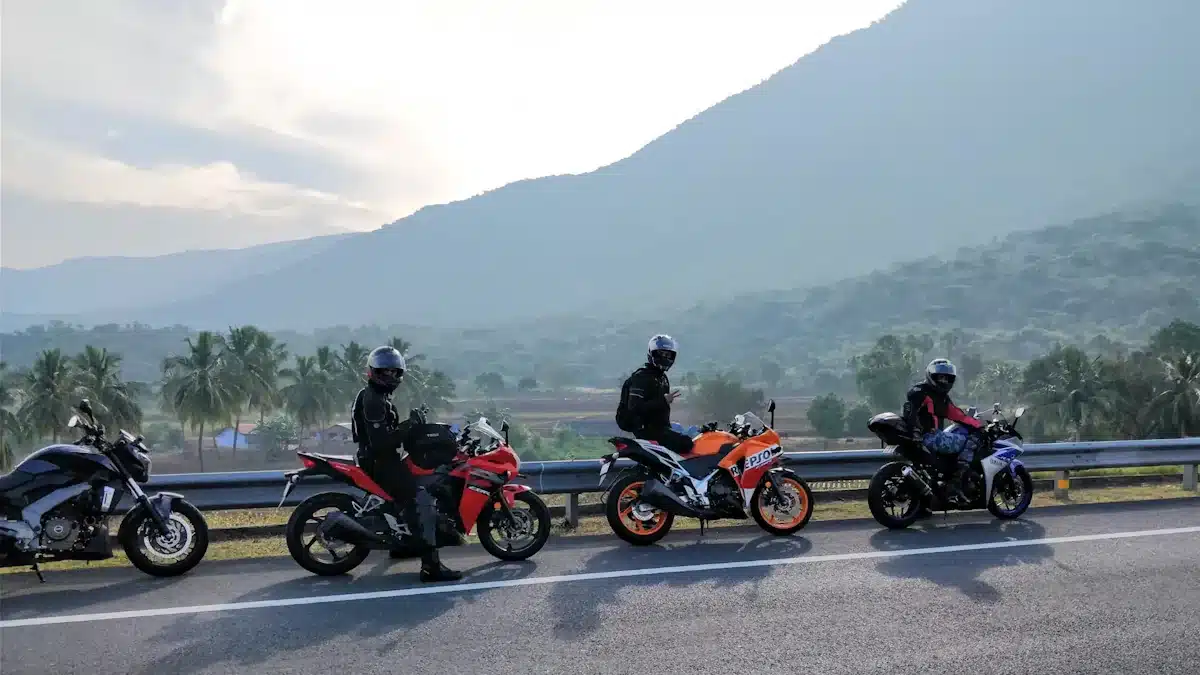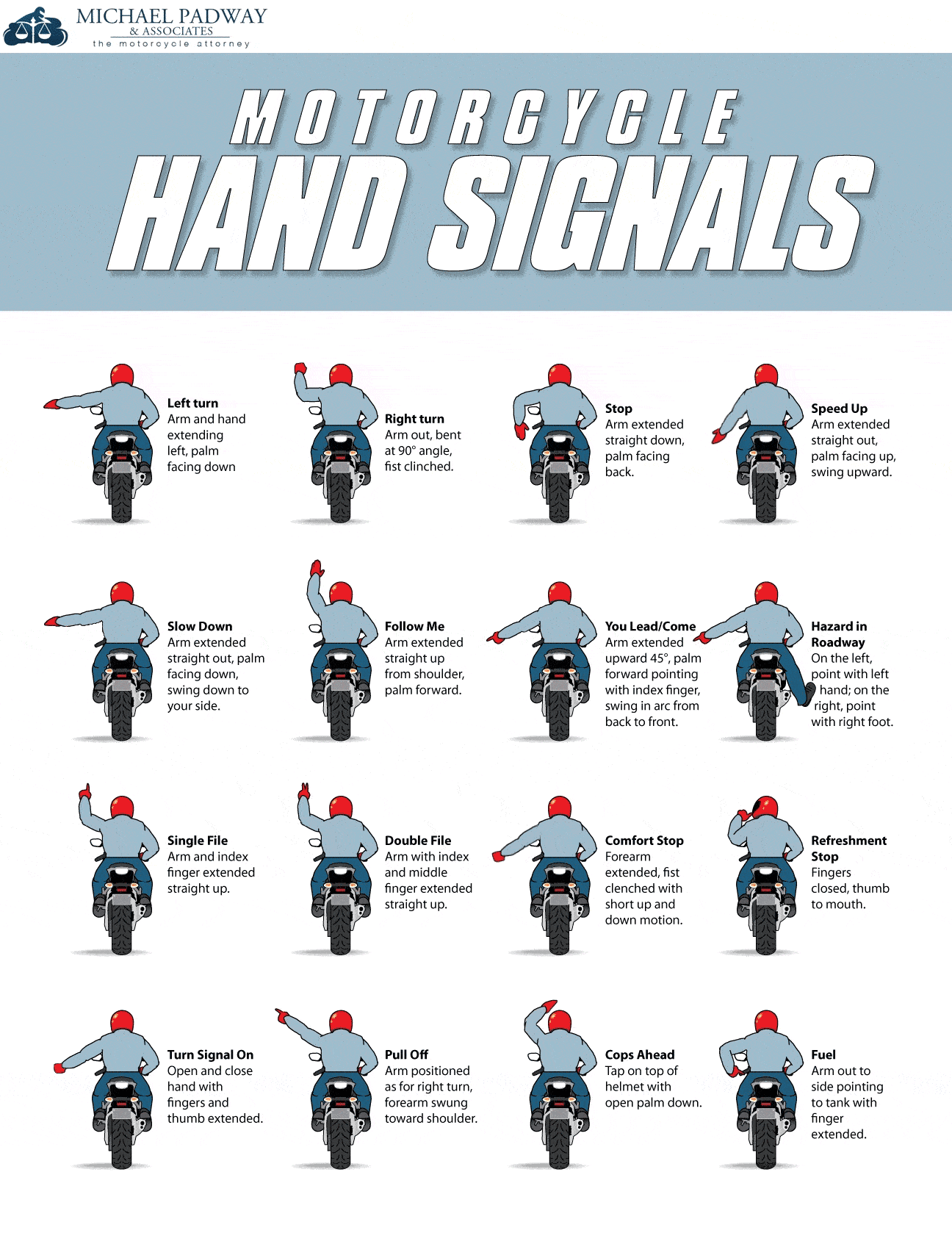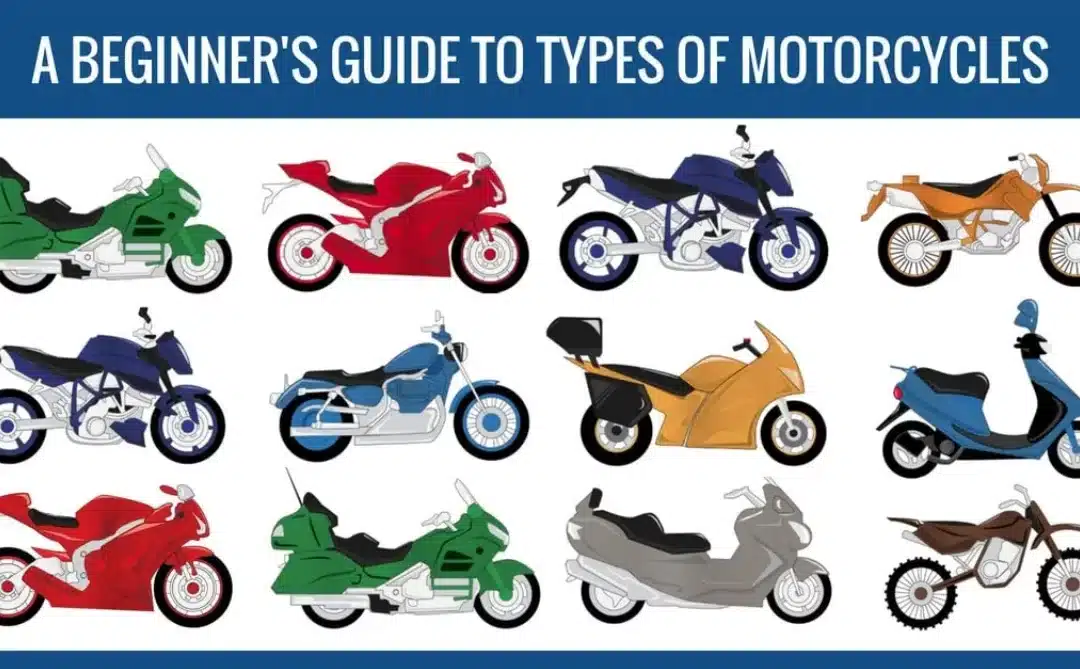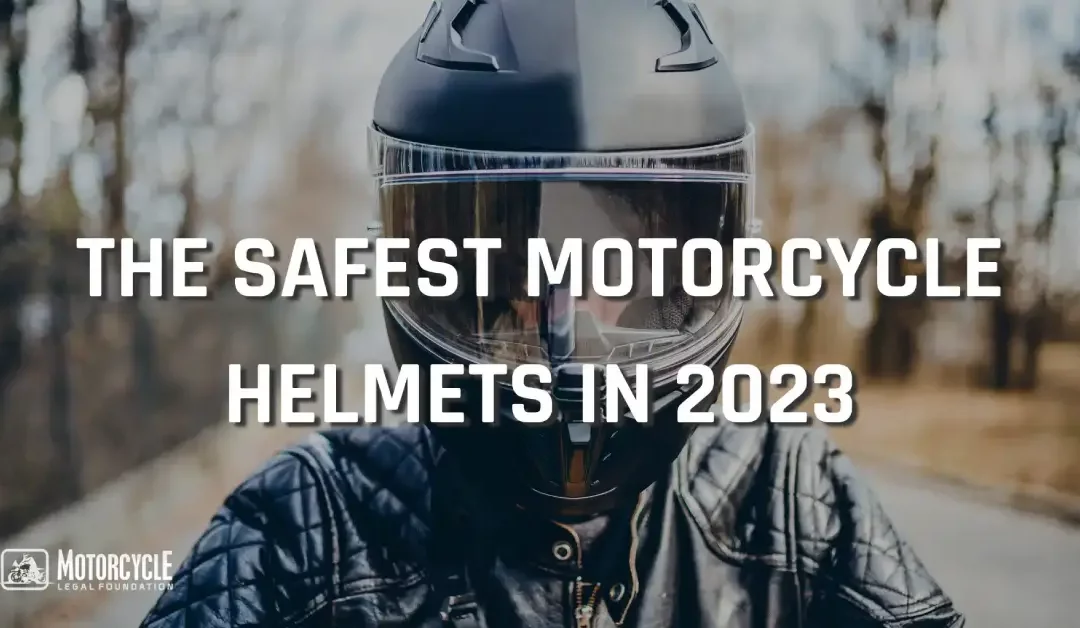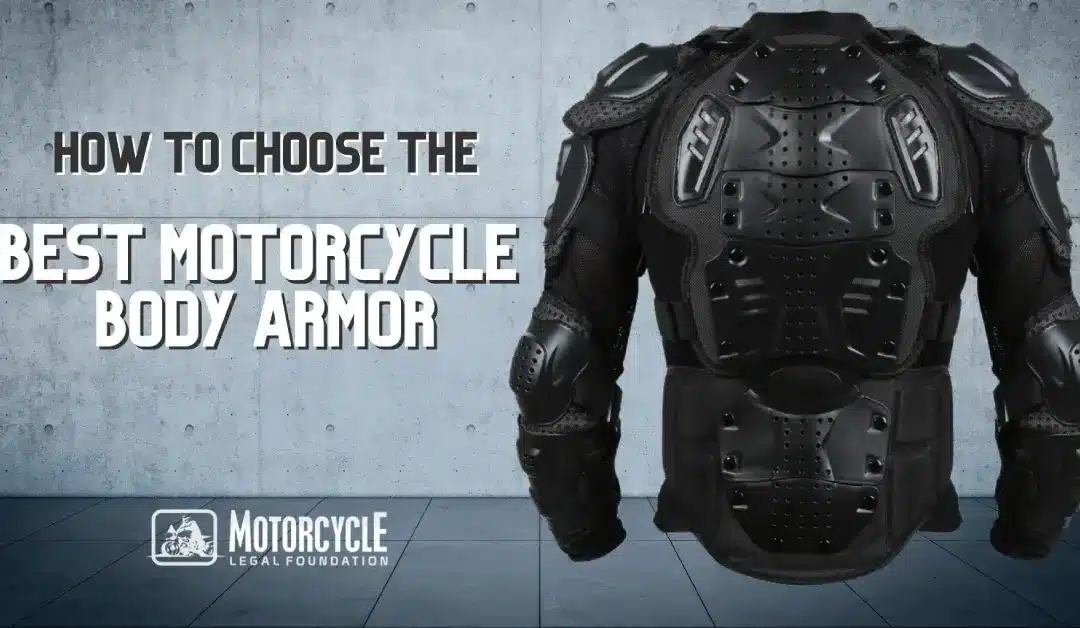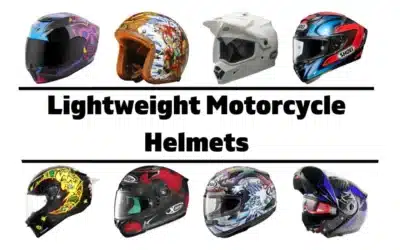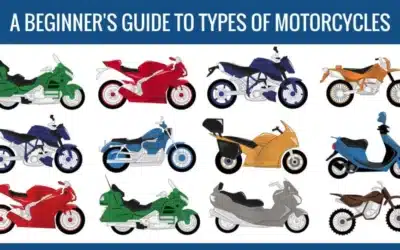Table of Contents
Add a header to begin generating the table of contents
Motorcycle riding gives you an exhilarating feeling of being in the open air while feeling the wind over your body. While riding alone is sometimes the goal, one of the best experiences you can have on a motorcycle is to ride in a group of close friends or family. Together you can enjoy the scenery on the open road and arrive safely at your destination with a few suggested guidelines.
Consider the following safety precautions before departing on your motorcycle group riding adventure.
1. Conduct a Pre-Ride Meeting
Before you leave your starting point, preparation will allow the group to understand how to get to your final destination or any stopping point along the way. Safe arrival is the primary goal, so deciding who leads the group is critical to the group’s safety. The leader should know the route the group will follow, and that leader should be able to explain it to all group members, show it on a map, and describe directions for the route.
It’s always advisable to provide directions and a visual map of the route in case anyone separates from the group. It’s always a good idea if the leader has a motorcycle GPS to make sure the whole group is going in the right direction.
Another point to be considered is if there are any tolls along the route. Either the leader should carry the toll amount for the whole group to reduce stops at the booth, or each member should quickly pay the toll and get back on the road.
2. Decide on the Leader
The leader of the riding group should be one of the most, if not the most, experienced riders in the group. They will be the first person to encounter other traffic going in the same direction or oncoming. Therefore, they should know how to respond to other drivers on the road and safely guide the other members through any situation the group comes across on their journey.
The tail rider, or the last in the group, also needs to be more experienced as traffic conditions could separate them. They can help other members catch up and navigate traffic safely without losing other group members.
3. Restrict the Number of Group Members
The number of riders should stay to a maximum of five to seven for safety. Larger groups can easily bunch up on the road and become an obstacle to themselves. Five would be a good number if the group were less experienced, and seven would be better if the group were more experienced. More riders do not necessarily mean more safety in numbers.
Too many riders can become dangerous as the group has limited flexibility to move on the road and navigate road debris and traffic. If the group has more riders than these numbers, consider breaking the whole group into sub-groups for more safety. Each group will have the lead and tail rider, as mentioned.
4. Ride Prepared
As mentioned, safety is a primary concern for the journey. Someone in the group should carry a first-aid kit and a tool kit. Preference is that the same rider does not carry both in case that particular rider is separated from the group for any reason. The person carrying the first-aid kit should know first-aid (and preferably CPR also) in order to treat any basic medical condition that could occur. Beyond those two items, every rider should carry a cell phone in case something comes up during the ride.
5. Ride in a Staggered Formation
During the ride, the group will encounter straight sections of road and curvy sections. In this situations, motorcycle riding formations are a crucial factor to ensure safety during the road. In the straight section, the lead rider should take a position in the left third of the riding lane. This will give them the best ability to see around traffic ahead of the group and to monitor oncoming traffic or debris on the road ahead.
The next or second rider will ride approximately one second behind the leader and in the right third of the lane. The third rider continues the trend by riding in the left third of the lane, one second behind the second rider and two seconds behind the leader. The riders behind that continue the pattern until the group is complete and staggered accordingly.
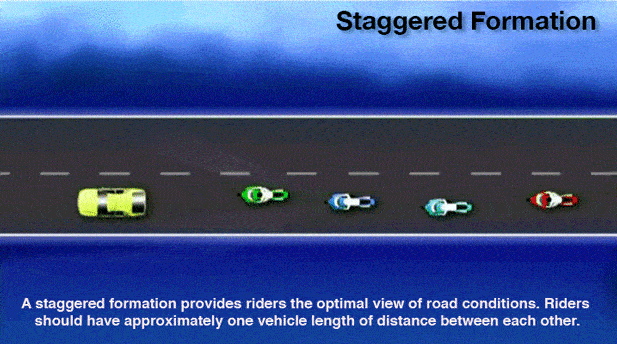
Each member should ride in a single-file line approximately two seconds apart in a curvy section of the road. You should adjust the spacing and lane position for safety, giving each member time to adjust to any other traffic and changing conditions. Avoid riding side by side, as it doesn’t allow either rider the option to move carefully within the lane to avoid other traffic or road debris.
There will be too much opportunity for the riders to contact each other. In conditions with limited visibility or other constraints, consider which formations (staggered or single-file) will provide the safest condition for the riders and choose it accordingly.
6. Pass Vehicles Safely (Overtaking)
There will come a time when one must pass a vehicle traveling in the lane in front of them. To safely pass the vehicle, do so one motorcycle at a time. The leader will go first, but each rider successive will need to position their motorcycles in the left third of the lane before starting the overtaking maneuver.
Riders behind the one making the pass will need to adjust their lane position to keep a following proper distance, and in the correct pattern in case the passing opportunity dries up.
Suppose a portion of the group is only able to make the pass. In that case, the remaining riders must adjust their position to assume the correct riding pattern until the next passing opportunity presents itself. As each member passes the vehicle in question, they need to keep their speed up and allow a gap to form behind them and the vehicle they passed. This gap is necessary for the next rider to safely pass and rejoin the lane at a safe distance from the vehicle.
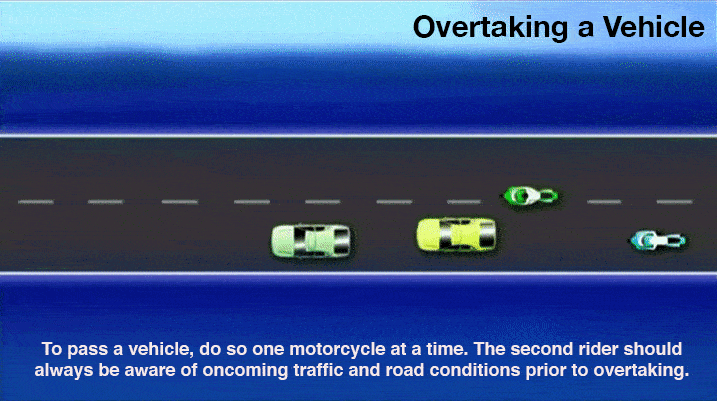 Video courtesy of Hamleshmotah.com
Video courtesy of Hamleshmotah.com
7. Have a Plan In Case Any Group Member Gets Separated
Being separated in a group ride will occasionally happen. It may occur in heavy traffic with other motorists or in an urban setting with traffic lights. The first thing to remember is not to panic. In your pre-journey meeting, you already discussed the route everyone will follow.
Continue on the same route as discussed, and if there is an experienced rider in the now sub-group, they should lead until the main group is formed back together. At that time they can take their original place in the main group. The lead sub-group should also continue on the same course as agreed upon and slow down or stop as needed until the latter group can rejoin them.
8. Be Mindful of All Skill Levels of Riders
Every group will have a variable riding experience. The key is to keep each rider comfortable and safe, so having the least experience toward the middle of the pack is recommended. This position will allow them a visual guide from riders in the front to indicate oncoming items to note (like traffic and road conditions). More experienced riders behind them will be able to keep aggressive drivers from disturbing them from the rear also.
The lead and tail riders should have the most experience as they can adjust to traffic the best and protect the other riders from traffic and road debris. Your most novice riders should also determine when and where to take breaks.
9. Use Hand Signals
All group members should know the essential hand signals used during group riding. Communicating through signals during a ride (when voice discussion is impossible) will allow each member to stay in sync with what is happening around them.
Note that these signals should be a quick discussion point and possibly a show and tell during the pre-ride meeting. Ensure all riders know the signals and their meanings.
10. Group Riding Etiquette
As mentioned, the skill level of each rider needs to be a consideration within the group and each rider should feel comfortable with the speed that the group will ride during the travel. Some riders will want to ride faster than others are comfortable with. If that is the case, consider splitting into different speed groups to keep everyone comfortable and safe.
Feeling pressured and guilt by not wanting to ride at a speed faster than you’re comfortable with is a heavy burden to carry. Choose to ride with those with the same approximate speed in mind as you have.
Loud exhausts are great to keep others aware of your presence in traffic, but deafening your riding partners over the course of a long ride isn’t a nice thing to do. If you have open pipes or a race muffler, consider riding towards or at the back of the group.
Motorcycling doesn’t just contain two-wheeled motorcycles. Trikes and sidecars are still a popular option, and due to their width, they should always ride at the back of the group. They are wide enough to take up two-thirds of the lane and don’t handle the same nimbleness as a two-wheeled motorcycle. That differential in handling can create a problem in a sudden change of speed or adjustment needed within the lane.
Wrap Up
Group riding brings an added level of adventure to motorcycle riding. With safe and thought-out practices, the journey together will only improve yearly. Each ride as a group will change with the scenery, and any addition or subtraction of group members will add new dynamics to the ride. Keep all the basics in mind, and you’ll enjoy motorcycling as long as you want.
10% OFF Your First Order at Revzilla.com


